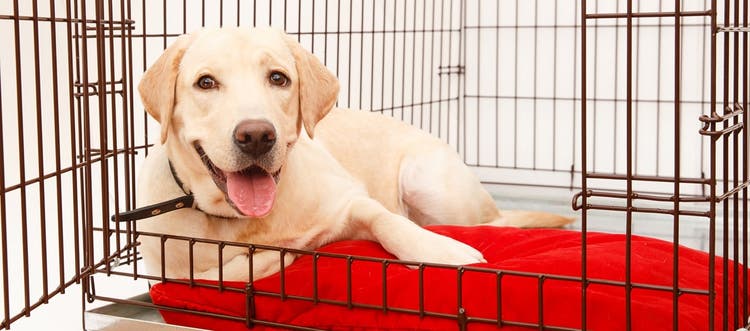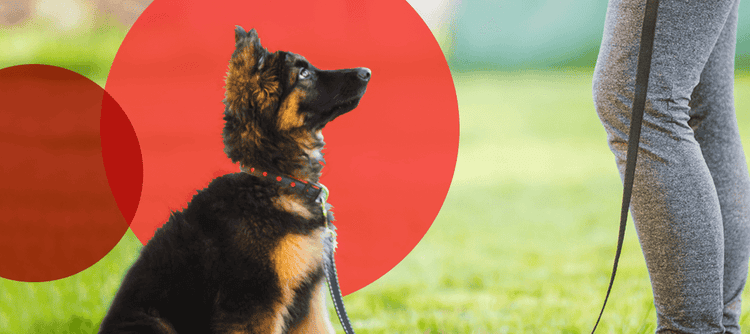Learn how crate training can help your dog.
Does the idea of putting your dog in a crate make you feel uneasy? While this practice may seem harsh, crate training has many benefits for both you and your pup. Read on to learn about crate training and how it can help your dog.
What Is Crate Training?
Crate training gives your dog an enclosed, familiar space of their own. Their crate can be a safe haven when they are away from home, sleeping, traveling and more.
Having a crate can help a dog develop positive habits and prevent them from developing negative ones. It's an important part of training a new puppy or dog.
Is It Cruel to Put My Dog in a Crate?
Contrary to what people may assume, most dogs like being in their crate. While dogs are not officially considered "den animals" (animals that spend most of their lives in a cave or underground), they do have similar instincts and usually enjoy being in enclosed environments. As humans, we worry that dogs will feel confined, but the opposite is true: A crate can provide a sense of security and help calm anxiety.
Why Should I Crate Train My Dog?
You've probably heard stories about owners coming home to a house torn apart by a dog left alone all day - and it's this type of havoc that crate training can help prevent. The benefits of crate training include:
- Preventing destruction: Anxiety and boredom are common reasons dogs destroy things. Crate training limits your dog's access to furniture and other items if they get bored and want to chew. It can also help alleviate their anxiety; if your dog feels safe and secure in their crate, this can deter the instinct to chew destructively.
- Safety: Putting your dog in a secure area can prevent accidental injury and keep them away from toxic materials, especially if you're not home.
- Housetraining: Dogs typically avoid urinating or defecating where they sleep. When housetraining a puppy, routinely putting them in their crate and taking them on scheduled walks teaches them the appropriate time and place to relieve themselves.
- Reducing anxiety: Everyone needs a safe space, including your dog. When they are tense or stressed, the crate is a comfortable place to retreat so they can calm down.
- Easier travel: If you like to travel with your dog, using a crate has two advantages. First, it keeps your dog safe while traveling. Second, it gives your dog a secure space to relax when they're in an unfamiliar environment.
How Do I Make Crate Training a Positive Experience for My Dog?
Your dog should never see the crate as a place of punishment. Here's how to make the crate a happy place for your pup:
- Make the crate comfortable: Some dogs like a blanket or towel, while others prefer a hard surface; try both options to see which your dog prefers. Since many dogs prefer to sleep in the dark, consider using a kennel, which is more enclosed than a crate.
- Treat your dog: Positive reinforcement is key. Giving your dog a snack or toy in the crate teaches them that being inside the crate is an enjoyable activity.
- Play crate games: Toss a ball in the crate during a game of fetch so your dog associates it with play.
With a little patience and a lot of positivity, your dog will learn to enjoy spending time in their own special space.





